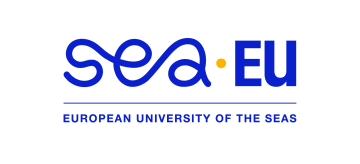ORCID: 0000-0003-4041-0891
ResearchGate: https://www.researchgate.net/profile/Mariusz-Grinholc
Dr Mariusz Grinholc, Assistant Professor at Intercollegiate Faculty of Biotechnology at University of Gdansk and Medical University of Gdansk in Poland. Was born on 16 June 1980. In the years 1995 - 1999 attended the Salesian High School, and then took up studies at the Intercollegiate Faculty of Biotechnology, which graduated with honors in 2004. After graduating thesis in 2004 he started to implement a new research project continuing study of methicillin-resistant Staphylococcus aureus in the framework of Doctoral Studies at the Faculty of Chemistry of the University of Gdansk and concentrated on the study of photodynamic therapy as an alternative method to combat multidrug human pathogens. These studies were part of his doctoral dissertation, defended with distinction, carried out in the Laboratory of Molecular Diagnostics Intercollegiate Faculty of Biotechnology. Conducted research led furthermore to describe for the first time the phenomenon of strain-dependent response of bacterial cells to photodynamic inactivation. With obtained results he proved that within the same species, the efficiency of photoinactivation may vary substantially from strains highly resistant to highly susceptible to photodynamic inactivation. Therefore, a very important subject of his research and work carried out is to search for and attempt to explain the mechanisms underlying strain-dependent sensitivity to photoinactivation. The identification of such mechanisms may contribute to the development of strategies leading to the abolition of the observed resistance to photodynamic inactivation.
Currently, the emerging and growing drug resistance of microorganisms is a huge threat to the health and lives of patients both in Europe and around the world. Hence, the subject of his research focused mainly on the work on the development and creation of alternative therapeutic options leading to a reduction in the use of antibiotics and a reduction in the rate of rise of drug resistance. Another innovative approach of his research is the search for a synergistic effect of photodynamic therapy with antibiotics used routinely. As part of this project Dr Grinholc has shown that this approach significantly enhances the bactericidal effect and that de facto there is a synergistic interaction between photodynamic inactivation and certain antibiotics routinely used to treat bacterial infections.
Rapacka-Zdończyk A, Wozniak A, Nakonieczna J, Grinholc M. Development of antimicrobial phototreatment tolerance: Why the methodology matters International Journal of Molecular Sciences, 2021
M. Pieranski, I. Sitkiewicz, M. Grinholc. Increased photoinactivation stress tolerance of Streptococcus agalactiae upon consecutive sublethal phototreatments. Free Radicals Biology and Medicine, Volume 160, 20 November 2020, Pages 657-669
M. Brasel, M. Pieranski, M. Grinholc. An extended Logistic model of photodynamic inactivation for various levels of irradiance using the example of Streptococcus agalactiae. Scientific Reports, 10, 14168 (2020). https://doi.org/10.1038/s41598-020-71033-7.
Rapacka-Zdonczyk A, Wozniak A, Pieranski M, Woziwodzka A, Bielawski KP, Grinholc M. Development of Staphylococcus aureus tolerance to antimicrobial photodynamic inactivation and antimicrobial blue light upon sub-lethal treatment. Scientific Reports, 2019, 1;9(1):9423. doi: 10.1038/s41598-019-45962-x.
A. Wozniak, A. Rapacka-Zdonczyk, N.T. Mutters, M. Grinholc. Antimicrobials are a photodynamic inactivation adjuvant for the eradication of extensively drug-resistant Acinetobacter baumannii. Frontiers in Microbiology, 2019, 10:229. doi: 10.3389/fmicb.2019.00229
